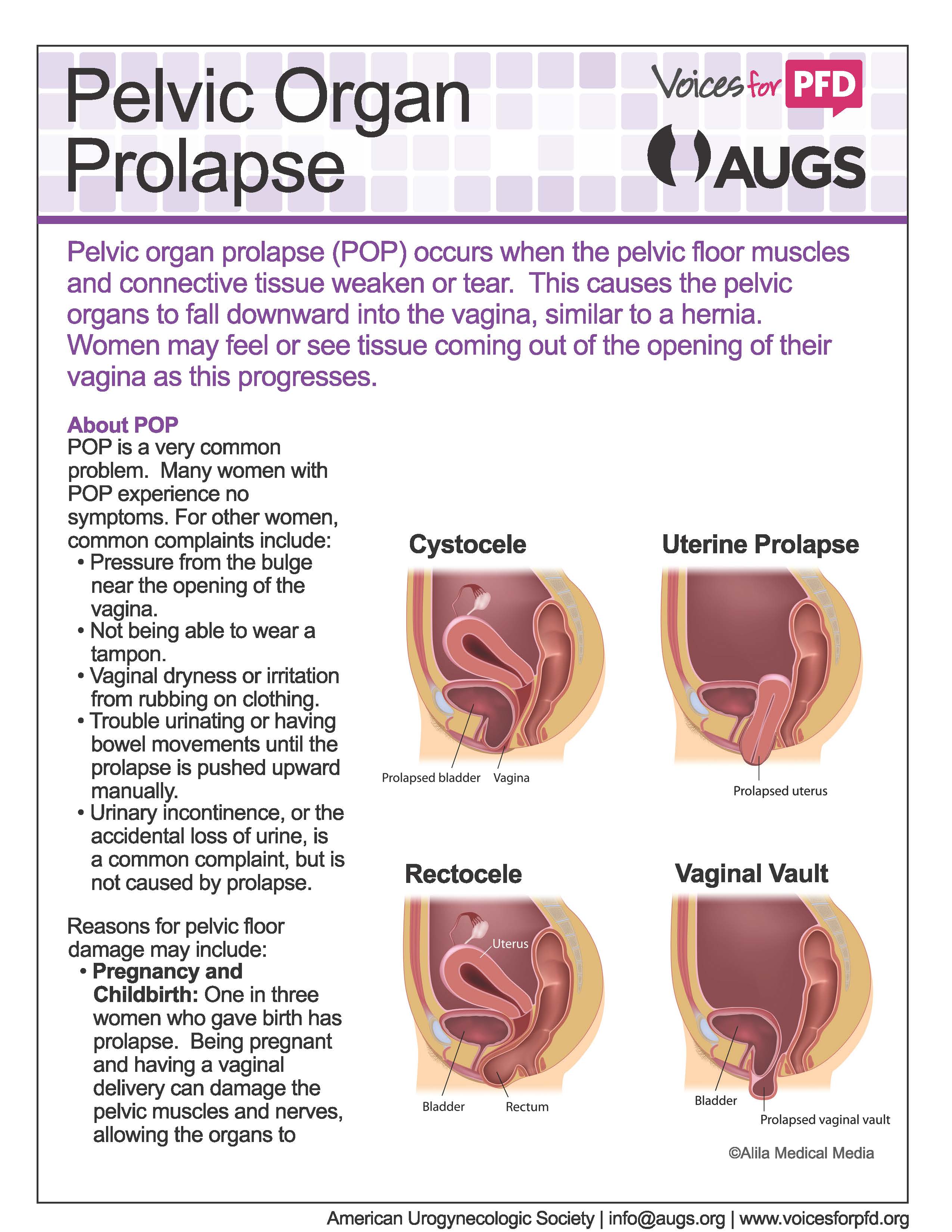Ever had an embarrassing leak while sneezing? Or experienced pressure down below? These could be early signs of pelvic floor weakness, and if left unchecked, may lead to a more serious condition called bladder prolapse. But don’t worry, strengthening your pelvic floor can make a world of difference. This article explores the effectiveness of pelvic floor exercises in managing bladder prolapse and empowers you to take control of your health.

Image: www.augs.org
Bladder prolapse occurs when the bladder, usually held in place by strong pelvic floor muscles, starts to bulge into the vagina. This can lead to a range of issues, including urinary incontinence, frequent urination, difficulty emptying the bladder, and discomfort during sex. The good news is, pelvic floor exercises, also known as Kegels, can strengthen the muscles supporting the bladder, potentially easing symptoms and even preventing further prolapse.
Understanding the Pelvic Floor
Imagine a hammock of muscles stretching across the base of your pelvis. That’s essentially your pelvic floor, a crucial group of muscles that control your bladder, bowels, and reproductive organs. These muscles, like any other muscle group, can weaken over time due to factors such as childbirth, aging, chronic coughing, obesity, and even genetics.
When the pelvic floor weakens, it can no longer adequately support the organs, leading to prolapse. Think of it like a saggy hammock – the weight of the organs starts pulling it downwards.
Can Pelvic Floor Exercises Really Help?
The answer is a resounding yes! Pelvic floor exercises are a cornerstone of conservative treatment for bladder prolapse. Regularly strengthened pelvic floor muscles can:
- Reduce the severity of prolapse: Stronger muscles can hold the bladder in place, lessening the bulge and symptoms.
- Improve urinary control: By improving muscle tone, pelvic floor exercises can reduce leaks and the need for frequent bathroom visits.
- Reduce pain and discomfort: Strengthened muscles can alleviate pressure and pain associated with prolapse.
- Prevent progression: Regular exercise can often halt or slow down the worsening of prolapse.
Performing Pelvic Floor Exercises Correctly
While Kegels seem simple, mastering the correct technique is key. Here’s a step-by-step guide:
- Find the right muscles: Imagine you’re trying to stop the flow of urine or gas. That feeling is what you’re aiming for. You should feel a tightening in the pelvic floor, not your stomach or buttocks.
- Hold and release: Squeeze these pelvic floor muscles for 5-10 seconds, then slowly release. Repeat this 10-15 times in a row.
- Regular practice: Aim for 3-4 sets of Kegels daily, integrating them into your routine like brushing your teeth.
Initially, these exercises might feel challenging, but consistency is key. You’ll notice a difference in your pelvic floor strength and control over time.

Image: parksheila.blogspot.com
Beyond Kegels: Other Pelvic Floor Exercises
While Kegels are a great starting point, other exercises can further target different parts of the pelvic floor and enhance results:
- Squats: These strengthen the gluteal muscles, which indirectly support the pelvic floor.
- Plank: Holding a plank engages the core, including the pelvic floor.
- Bridge: This exercise targets the glutes and hamstrings, contributing to pelvic floor stability.
Beyond Exercise: Additional Management Strategies
Pelvic floor exercises are not a one-size-fits-all solution. Other strategies can work in tandem to improve symptoms and manage prolapse effectively:
- Pessary: This device inserted into the vagina can support the bladder and reduce symptoms. It requires regular cleaning and adjustments.
- Surgery: In severe cases or when conservative treatments fail, surgery may be an option. It involves repairing the weakened tissues and restoring bladder support.
- Lifestyle modifications: Maintaining a healthy weight, avoiding constipation, and practicing proper bladder habits can significantly impact symptom management.
When to Seek Medical Advice
While pelvic floor exercises can be incredibly helpful, it’s crucial to consult a doctor if you experience any concerning symptoms. Early intervention can significantly improve treatment outcomes.
If you experience:
- Urinary incontinence or leakage that worsens despite exercise.
- Persistent discomfort or pain in the pelvic region.
- Difficulty emptying your bladder.
- A feeling of fullness or pressure in your vagina.
Seek immediate medical attention. A doctor can diagnose the cause of your symptoms, determine the severity of prolapse (if present), and recommend the most appropriate treatment plan for you.
Can Pelvic Floor Exercises Help Bladder Prolapse
https://youtube.com/watch?v=JuEabEKgPi8
Conclusion
Pelvic floor exercises, when performed correctly and consistently, can be a powerful tool in managing bladder prolapse. By strengthening these crucial muscles, you can alleviate symptoms, prevent further deterioration, and reclaim control over your health. Remember to seek professional advice for personalized guidance and to address any concerns you may have. Don’t let bladder prolapse keep you from living an active and fulfilling life – empower yourself with knowledge and take charge of your well-being!





